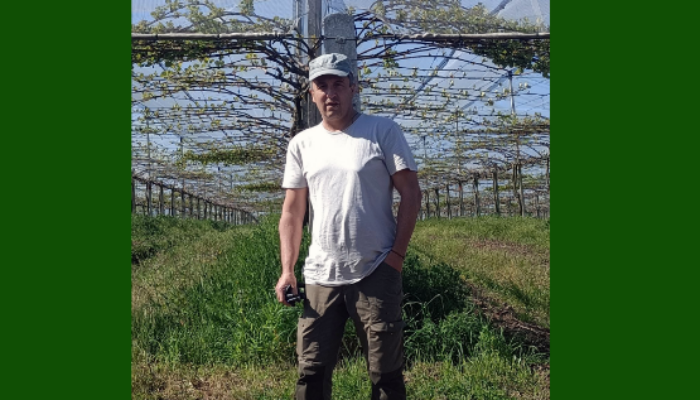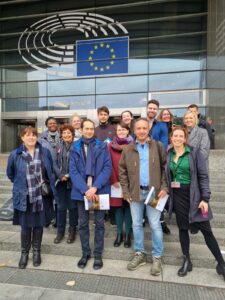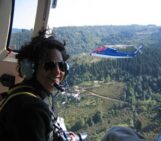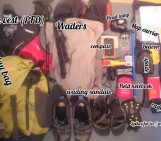
Adriano, welcome to GeoTalk! As an Associate Professor of Agricultural Chemistry and Plant Biology, you work a lot on microbiology and chemistry related to soil management. Can you tell us a bit about how your work is relevant for society?
Thank you, Chloe! It is a pleasure. My research in soil chemistry and microbiology directly contributes to understanding factors influencing crop yield and quality, thereby enhancing global food security. I am actively involved in developing sustainable agricultural practices, aiming to minimise environmental impact, reduce soil degradation, and promote long-term soil health.
By studying the impact of agricultural practices on the environment, I can contribute to the development of environmentally friendly farming techniques that minimise pollution, conserve water, and protect biodiversity. Furthermore, my work in soil management plays a crucial role in carbon sequestration and mitigating climate change, contributing to global efforts in this regard.
Can you explain why soil biodiversity is so important?
Understanding the consequences of biodiversity loss is essential for addressing global challenges such as food insecurity, climate change, poverty, and diseases. While there is increasing attention on above-ground biodiversity, particularly plants and animals, soil biodiversity remains overlooked. The rich diversity of soil organisms plays a vital role in food production, soil regeneration, and water purification. Thus, soil biodiversity is of paramount importance because of its multifaceted impact on the health and functionality of ecosystems.
Not only does soil biodiversity sustains the intricate web of life beneath our feet but it’s also a key factor in carbon sequestration and promotes resilience to environmental changes – enabling ecosystems to withstand disturbances and continue functioning effectively. Furthermore, it plays a crucial role in water purification. Soil organisms contribute to the filtration and breakdown of pollutants, safeguarding water quality in both surface and groundwater.
Currently, the loss of soil biodiversity is a major global threat. Soil biodiversity, constituting over 25% of the planet’s total biodiversity, has the potential to serve as a nature-based solution to many global challenges. For this reason, efforts to conserve biodiversity should be implemented, as its preservation is essential for maintaining the delicate balance that sustains life on Earth.
Why is there limited data on soil biodiversity?
Limited data on soil biodiversity can be attributed to several complex factors. Firstly, the sheer diversity and complexity of soil ecosystems pose significant challenges to comprehensive data collection. Soil is a heterogeneous environment with a multitude of interacting organisms, making it difficult to capture the full extent of biodiversity. Moreover, the majority of soil microorganisms are challenging to culture in laboratory settings, hindering traditional methods of identification.
Financial constraints and a lack of dedicated research funding contribute to the scarcity of comprehensive soil biodiversity data. Historically, soil biodiversity has often been overshadowed by above-ground biodiversity in conservation and research priorities. The “out of sight, out of mind” phenomenon has resulted in limited attention and resources allocated to soil ecosystems.
Furthermore, the interdisciplinary nature of soil science contributes to fragmented efforts. Then, soil biodiversity research requires collaboration between microbiologists, ecologists, agronomists, and other specialists, making it challenging to integrate data across disciplines and generate a holistic understanding.
Can you tell us about your experience as a National Geographic Explorer and the National Geographic Society-funded project, “Raiders of the Lost Algae”?
Being a National Geographic Explorer is a prestigious designation that comes with a sense of responsibility and privilege. As an NatGeo Explorer, I am part of a community of scientists, researchers, and storytellers committed to exploration, conservation, and the dissemination of knowledge about our planet. This role involves not only conducting scientific research but also sharing the discoveries and insights with a broader audience through storytelling and communication.
Currently, I am the principal investigator of the National Geographic Society-funded project, “Raiders of the Lost Algae.” The focus of this project is on the often-overlooked world of algae and blue-green cyanobacteria, which collectively contribute around 50% of the Earth’s oxygen and play a crucial role in carbon capture and recycling within ecosystems.
While these organisms are commonly associated with aquatic environments, they thrive in diverse habitats, including extreme locations like the walls of urban buildings, hot deserts, Antarctic snow, and even at an altitude of 2,000 meters. In many ecosystems, they serve as the primary producers, particularly in arid climates where they enhance soil structure, fertility, and promote plant growth. Additionally, nitrogen-fixing cyanobacteria provide a valuable source of nitrogen, a key fertilizer element. Despite their ecological significance, land algae and cyanobacteria remain poorly studied and may face threats from climate change, pollution, and soil degradation.
The project aims to address this knowledge gap by conducting a comprehensive study in the Puglia region in southern Italy. Our objectives include comparing different environments within this biodiverse and heterogeneous area to assess the diversity, richness, density, and productivity of land algae in extreme and moderate habitats.
What motivated you to join the EGU’s Biodiversity Task Force?
My motivation to join the EGU’s Biodiversity Task Force was based on the EGU’s mission and its emphasis on the pursuit of a sustainable and equitable future for humanity and the planet. The formation of the Biodiversity Task Force aligns with my commitment to addressing significant societal and environmental issues, particularly linked to biodiversity.
My motivation also stems from the belief in the importance of bridging the gap between scientific knowledge and policy implementation, a central objective of the Biodiversity Task Force.
The diverse skill set of its members, including proficiency in communication, photojournalism, outreach, and policy, resonates with my understanding of the multifaceted nature of biodiversity-related challenges. The prospect of working at the science-policy interface, gaining new insights, and expanding my network motivated me. At the same time, I think I brought fundamental qualities to the task force, with my research experience in soil biodiversity, soil use and management, and optimisation of agricultural techniques with low environmental impact.
What aspect of your involvement in the Biodiversity Task Force do you find most enjoyable or rewarding?
I find the most enjoyable and rewarding aspect to be our collective efforts in advocating for meaningful and impactful changes, particularly in supporting the ambitious objectives outlined in the Nature Restoration Law. Contributing to the delineation of essential points for incorpora tion, modification, or fortification within the Nature Restoration Law represented a tangible and rewarding effort. The task force’s recommendations were aimed at ensuring the success of this pivotal legislation.
tion, modification, or fortification within the Nature Restoration Law represented a tangible and rewarding effort. The task force’s recommendations were aimed at ensuring the success of this pivotal legislation.
The task force’s dedication to bridging the gap between science and policy was particularly rewarding to me, as it addressed the urgent need for transformative change to halt and reverse biodiversity loss. The specific examples of our work on peatlands and forests underscored the practical impact of our efforts. Advocating for the inclusion of restoration targets in the Nature Restoration Law for peatlands and forests showcased our commitment to making a positive difference
I am convinced that collaboration and knowledge-sharing are pivotal in advancing our collective efforts towards a more sustainable and resilient future.
I’m looking forward to actively contributing to the EGU’s mission and working collaboratively with EGU members to make meaningful strides in biodiversity research and its implications for global sustainability.




